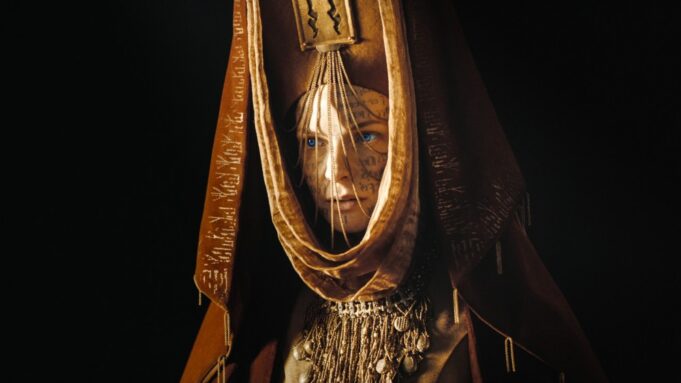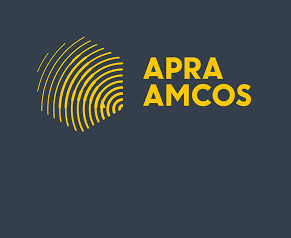“My planet, Arrakis, is so beautiful when the sun is low. Rolling over the sands, you can see spice in the air,” a proud and somber Chani says of her desert planet, Arrakis, which is home to the Freman, at the beginning of Denis Villeneuve‘s “Dune: Part One.”
Critics around the world hailed the first installment of Villeneuve’s take on Frank Herbert’s 1965 sci-fi classic about false idols, imperialism and religion back in 2021, and now, three years later, reviews are also strong for the long-awaited sequel. But despite praise for the film’s stunning cinematography and visual effects, “Dune: Part Two” is being criticized by some commentators for failing to properly contend with the book’s Middle Eastern and North African (MENA) influences and commentary on Western imperialism. These critics offer a wide range of objections, including faulting the production for failing to cast many MENA actors in speaking roles, as well as leveling objections to story choices that diminish MENA influences.
In the sequel, Villeneuve offers a deeper exploration of Arrakis and its inhabitants, the Fremen, whose lives are changed by the arrival and rise to power of Paul Atreides, an outsider whose actions dictate the fate of their society.
Paul (Timothée Chalamet) is marooned on the desert world with his mother Jessica (Rebecca Ferguson), where he seeks justice for his father’s murder. He immerses himself in the ways of the Fremen, growing close to one named Chani (Zendaya) while grappling with the possibility that he is their prophesied messiah, known by the Fremen as the Lisan al-Gaib.

Rebecca Ferguson as Lady Jessica in “Dune: Part Two.”
©Warner Bros/Courtesy Everett Collection
While “Dune” is set in a fantastical universe, populated by fictional peoples like the Fremen, Herbert’s novel, and subsequent works, drew heavily from Middle Eastern, North African and Islamic culture. Key creative inspirations include historical figure T.E. Lawrence and his 1962 Oscar-winning biopic “Lawrence of Arabia,” and Lesley Blanch’s 1960 novel “The Sabres of Paradise,” which details Muslim resistance to the Russian conquest of the Caucasus.
Herbert also based the Fremen and their conflicts with outside forces on historical events from the MENA region. The starkest might be the Algerian War of Independence, in which Algerians won their independence from France, as the first “Dune” novel was released just three years after it ended. Herbert’s son Brian acknowledged that Algerians as well as “Bedouins of the Arabian plateau, separated from civilization by vast scratches of the desert” were among MENA people who inspired Herbert’s Fremen.
Herbert even noted the Fremen were rooted in Arabic culture and driven from planet to planet amid hardship — in a 1980 interview, he explained: “I saw [Fremen] as having very ancient roots in Arabic culture, but an Arabic culture modified by the convulsions through which it had gone, over the centuries.”
The film adaptations utilize imagery and inclusion of distinctive MENA and Islamic cultural elements. In “Dune: Part Two,” Amazigh-like facial tattoos are seen on Ferguson’s Lady Jessica. Fremen are dressed in flowing abaya-like clothing or with keffiyehs covering faces that are frequently juxtaposed against the desert backdrops of Jordan and Abu Dhabi, where the movie was shot. Arabic terms like “Mahdi” and the aforementioned “Lisan al Gaib” appear throughout the script.
While Villeneuve has rarely discussed the lack of MENA cast in either of his “Dune” films, in a conversation with The Nerds of Color around the release of “Dune: Part One,” the director stated his goal was to be faithful to Herbert’s description of the Fremen.
“I tried to be as faithful as possible to the images I had in my mind when I read the book when I was young,” Villeneuve said. “And this idea that the world of the Fremen would be kind of inspired by culture from North Africa and the Middle East — culture that I deeply love by the way, because it’s a very complex world — there was this idea that there was something powerful that will come out from Africa in Frank Herbert’s mind. And I tried to respect his ideas. Which is why I did the casting the way I did. And I feel truly that I’m right in doing it this way. It feels authentic, it feels honest, and true to the book.”
Villeneuve, as well as Warner Bros. and Legendary, which produced the film, declined to comment for this article. A source close to production noted that “Dune” and its sequel benefitted the MENA region by utilizing and training local film crew and administering extensive internship and apprenticeship programs. The source said there were “roughly 42 additional Fremen roles” and “about 15 are of MENA descent.”
Despite the filmmaker’s ambitions to be true to Herbert’s novel and its influences, critics of the movie note that the only actor playing a Fremen with links to the MENA region is Souheila Yacoub. A Swiss-born performer with Tunisian heritage, Yacoub plays Shishakli, a friend and companion to Zendaya’s Chani. In “Dune: Part One,” there was no MENA representation in lead or supporting roles among the Fremen. David Dastmalchian, who is of Iranian descent, was cast in the first film, but as a member of House Harkonnen, which colonized Arrakis and exploited its resources.
Furvah Shah, in a piece for Cosmopolitan UK, writes that she was frustrated as a Muslim viewer with the lack of onscreen MENA talent in major roles while watching the sequel. “From the use of beads and prostration in prayers by the Fremen, to the almost-Arabic language, phrases pulled from religious texts and the wearing of veils, it felt like ‘Dune’ takes a heavy amount of inspiration from Islam, Middle Eastern and North African cultures yet simultaneously erases us from screen,” she writes.
Serena Rasoul, a casting director and founder of MA Casting, tells Variety that she’s disappointed more MENA actors weren’t cast: “This was a missed opportunity to honor the region’s rich culture and heritage. “
Sue Obeidi, director of the MPAC Hollywood Bureau, shares similar dissatisfaction with the casting, calling it a “puzzling” move by the movie’s producers given the first film received similar critiques. “This feels wrong considering the story’s cultural background, and because of this, the film misses out on accurately showing the diverse world of ‘Dune.’ It weakens the films’ integrity and cultural impact,” she tells Variety.
“One of the big things we hear when it comes to Middle Eastern people getting cast or brown people getting cast is there is not enough talent,” Amani Al-Khatahtbeh, founder of MuslimGirl.com, tells Variety. “Yet there is no hesitation and no challenge for the industry to cast those actors from those backgrounds in the stereotypical roles of being terrorists or the villains. Conveniently, we are at a surplus of Middle Eastern actors when it comes to negative portrayal.”

Zendaya as Chani in “Dune: Part Two.”
©Warner Bros/Courtesy Everett Collection
Thomas Simsarian Dolan, an academic advisor for the MENA Arts Advocacy Coalition and faculty in Middle Eastern and South Asian Studies at Emory, finds the lack of MENA representation in both “Dune” films disappointing, given how scarce opportunities are for the community (as noted in recent studies like UCLA’s Hollywood Diversity Report for 2024, which found across 806 roles in top theatrical films, 1.9% were MENA).
“If the novel is so undeniably anchored in this place, why is it so unpalatable to employ MENA performers and creatives?” Dolan asks.
Dolan adds that while Yacoub’s role is commendable in “Dune: Part Two,” the character falls into the unfortunate “native fixer” or “noble savage” trope by sacrificing herself to help Paul Atreides and the Fremen escape the Harkonnen.
“The native fixer is in on the action, but definitely in a decidedly second-class position, subservient to the colonial power or hero. We know if we have a minority character (person of color, queer, etc.), they will help the hero and then die,” Dolan explains.
Alongside a lack of MENA actors, “Dune: Part Two” has also been criticized for making changes from its source material that diminish or erode MENA influences.
In a recent New Yorker piece, Manvir Singh, an assistant professor of anthropology at the University of California, Davis, breaks down how Herbert’s novel was filled with Arabic, yet the films’ linguist David J. Peterson expunged much of that from the Fremen’s language of Chakobsa for “believability.”
Singh writes how two particular Arabic excisions stand out across the films. First, Herbert’s use of the term “jihad” in the books shifted to “holy war” in the films. The second major change is for Paul’s rallying cry “long live the fighters.”
“In the book… the phrase ‘Long live the fighters’ is written as ‘Ya hya chouhada,’ a reference to a celebratory chant from the Algerian War of Independence, which Herbert renders in Frenchified Arabic. This line, more than any other, connects the Fremen’s struggle to recent independence movements, turning them from outer-space sand people into portraits of anti-imperialism,” Singh explains.

Timothée Chalamet, who plays Paul Atreides, stands next to Zendaya, who plays Chani, in “Dune: Part Two.”
©Warner Bros/Courtesy Everett Collection
Khaldoun Khelil, who has written extensively on topics related to “Dune” and wrote for “The Dune: Adventures in the Imperium” roleplaying game, says erasure of MENA influences in the sequel flattened Fremen culture and consequently weakened Herbert’s anti-colonial message.
“Even the word Fremen comes from Amazigh culture. How can you learn anything about the Fremen while erasing source material? You can’t learn anything about them because there is an editorial decision being made where their Arabness cannot exist,” Khelil tells Variety. “The problem for the movies [and] the director’s vision and his perspective is that he did his best to scrub the serial numbers off of everything that was Arab or Muslim in the story, and that had an unintended consequence of also scrubbing off some of the anti-imperialist messaging.”
Khelil credits Villeneuve — who helmed sci-fi films “Blade Runner 2049” and “Arrival” — for respecting the genre overall. “[He] clearly understands that sci-fi is a wonderful mirror or prism to understand our current time and place,” Khelil says.
“But he has his own agendas,” Khelil continues. “In the case of ‘Dune,’ Villeneuve is expressing his personal discontent with fanaticism and those who exploit it and this superseded ‘Dune’s’ other themes in his interpretation… If the Fremen are boiled down to exploited fanatics, it strips them of not only agency but it ignores what they’re really fighting for. They’re fighting for their home. Arrakis. Dune.”
Dr. Kara Kennedy, who has written extensively on topics related to “Dune” and runs the website Dune Scholar which hosts research-based analysis of Herbert’s works, emphasizes that “The Middle East is undeniably a foundation for Dune,” and much of Herbert’s research and actual writings prove that. She agrees the sequel had an opportunity to “flesh out” Fremen culture — their faith, their traditions, their hopes for Arrakis. Instead, “we got to see more fighting. We got to see Chani holding a rocket launcher. We got to see hooded women whispering about religion and propaganda.”
Khelil notes this is a recurring issue in sci-fi and fantasy: stories drawing from marginalized cultures and people without actually centering them. This can lead to muddled messaging or actors of color losing valuable on-screen opportunities (see: “Prince of Persia” and “Ghost in the Shell.”)
Dolan contends there are plenty of examples of how to adapt a story inspired by a marginalized community that is both entertaining and respectful. That includes Marvel’s “Ms. Marvel” (featuring heroine Kamala Khan and her Pakistani-American family) and “Moon Knight” (which draws protagonist Steven Grant into the world of Egyptian gods). An integral part of these projects is that the communities inspiring those stories were intimately involved in making them.

Zendaya in “Dune: Part Two.”
©Warner Bros/Courtesy Everett Collection
Several MENA voices cited in this piece noted when watching “Dune: Part Two,” it is impossible not to be reminded of ongoing devastation and conflicts in the region faced by Palestinians, Armenians, Sudanese, and Syrians among others. These have led to the displacement and death of many people and the destruction of their cultural artifacts, institutions and homes.
“Global events demand bigger responsibility from Hollywood to do right by our stories. We come from robust, historic cultures and our voices are attached to real names, people and experiences — not anonymous fodder for entertainment. The way we’re portrayed in the media has a direct impact on the way people perceive our communities that are already facing unspeakable oppression and complacency,” Al-Khatahtbeh adds. “Especially as the world is witnessing the global fight against colonization in real-time on social media, it would be the failure of Hollywood to suppress those themes from a story like ‘Dune’ that is so clearly inspired by those movements.”
Rasoul emphasizes that final point — that Herbert, the father of the “Dune” universe, delved deeply into the MENA region for his worldbuilding, pulling from its languages, religions and cultural practices. As for the recent film adaptations, they “did very little to engage MENA actors, artists, consultants, musicians, and linguists. Instead, it continued to mythologize and exotify a Middle Eastern-inspired world.”
For Rasoul, when it comes to the “Dune” films: “Our stories are good enough, but our people are not.”
From Variety US


































